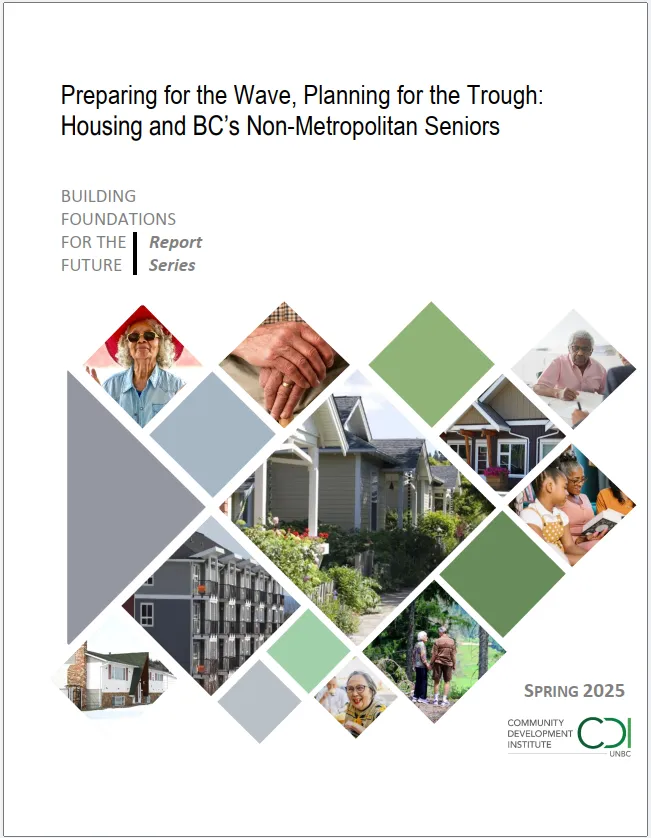Preparing for the Wave, Planning for the Trough: Housing and BC's Non-Metropolitan Seniors
BC Non-Metropolitan Seniors Housing Report
Part of the "Building Foundations for the Future" Report Series
In many areas of non-metropolitan British Columbia, the state of housing has become a key constraint on economic and community development. Our ongoing housing research has pointed to a number of long-standing as well as emerging issues and challenges related to housing in non-metropolitan BC, and the resulting implications. This report focuses on one population group: BC's non-metropolitan seniors.
The report examines housing needs and challenges faced by seniors in non-metropolitan areas (NMAs) of British Columbia based on data collected from the 2021 Census Program. As the senior population continues to grow across the province, particularly in NMAs, the demand for appropriate, accessible, and affordable housing is increasing. Through a detailed analysis of 38 sample communities, this study identifies key trends, vulnerabilities, and opportunities to support seniors in aging in place while maintaining their quality of life. Key findings from this report include:
• The NMA senior population is expanding significantly, with the majority currently classified as "young seniors" (65–74 years). As they are aging, communities will experience a wave of older seniors with increasing demand for appropriate housing, health care, and support services. By the 2040s, this wave will begin to recede across most NMA.
• Many seniors own their homes and live in single detached dwellings. This can become a financial, maintenance, and accessibility burden as they age. Given the lack of diversity in the NMA housing stock, alternative options are often limited.
• Senior renters and senior women have emerged as the most vulnerable senior groups.
• A shrinking workforce aged population in many NMAs threatens the availability of essential services, including health care, home care, and transportation.
• While immediate needs are pressing, the long-term trajectory of the senior population suggests a future decline or "trough" following the current growth wave. Investments in housing and infrastructure must be adaptable to future demographic shifts to avoid underutilized or vacant facilities in the coming decades.
